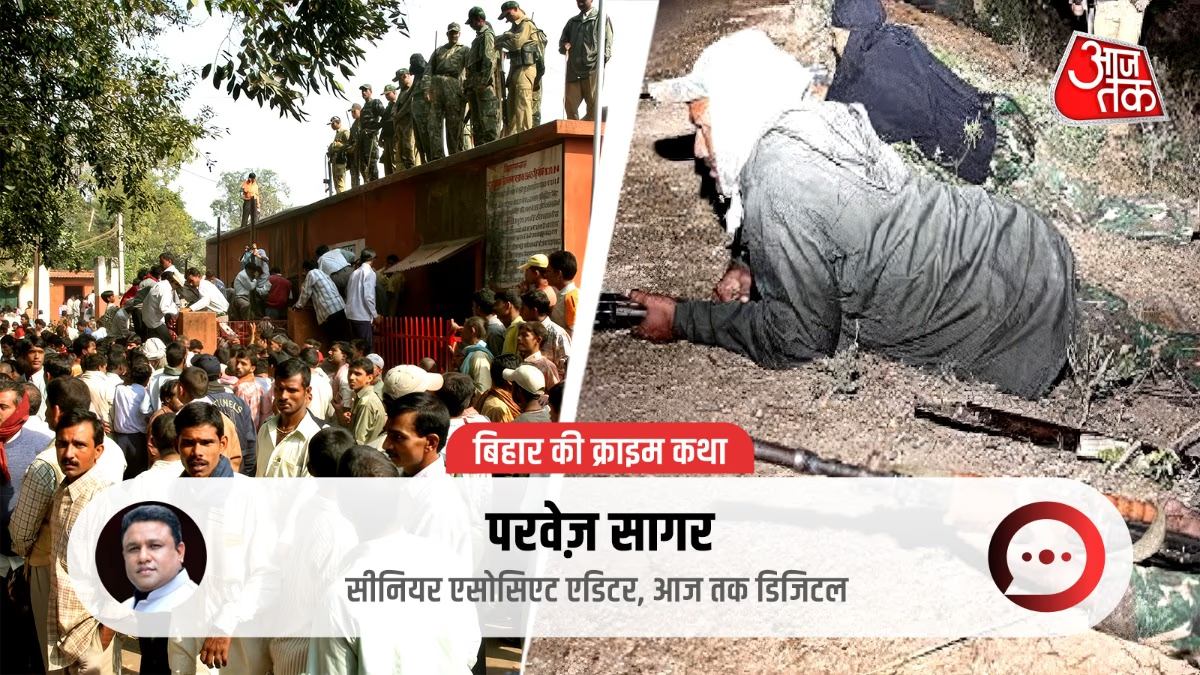Crime Chronicles of Bihar:
Bihar's history is rich with episodes of crime and rebellion, especially post-independence, where jail breaks have consistently questioned the state's security apparatus. Between 1947 and 2025, approximately 10 to 15 major jailbreaks have occurred, characterized by Naxalism, influential criminals, and administrative negligence. These jailbreaks symbolize not just the inmates' freedom but also a broader social-political upheaval. Naxal organizations dubbed these as 'Operation Jail Break,' using them as instruments of revolution. Many influential figures exploited political protection, ignoring prison confines. These jail breaks unveiled the 'jungle raj' image of Bihar, bringing to light the state's fragile law and order. Join us as we delve into the crime chronicles of Bihar's jailbreaks that exposed its legal weaknesses.
Hazaribagh Jail Break 1970 - The First Major Conspiracy:
In 1970, the Hazaribagh jail break shook Bihar to its foundations. This incident marked the early stages of the Naxal movement when members of the Communist Party of India (Marxist-Leninist) orchestrated a well-planned jailbreak. Revolutionaries stormed the prison, freeing several inmates, including top Naxalite leaders. Armed attackers engaged in gunfire with guards and broke through walls, symbolizing a rebellion against British-era prison systems. Following the break, police embarked on extensive search operations, yet many fugitives remained underground for years. This event elevated Naxalism to a national issue. At the time, Hazaribagh was part of Bihar, deeply impacted by this major demonstration of Naxalite power.
Bhagalpur Jail Break 1987 - Pinnacle of Ethnic Violence:
The 1987 Bhagalpur jailbreak epitomized ethnic violence and chaos. Amidst the Hindu-Muslim riots, some inmates seized the moment, leading to the escape of about 20 prisoners associated with riot-related crimes. Utilizing the cover of a mob, they intimidated prison guards. This event set the groundwork for the significant 1989 riots, which resulted in hundreds of deaths. The police's negligence was evident, given the lax security in the jail. Many escapees were eventually captured, significantly pressuring Bihar's administration. Bhagalpur, nestled by the Ganges, became a crime hotbed.
Chhapra Jail Break 1990 - Era of Powerhouses:
In 1990, the Chhapra jailbreak heralded a new era dominated by influential criminals. From the Saran district jail, 13 inmates escaped, including the notorious Rajkishore Choudhary. Prisoners used bamboo ladders to scale the northern wall. This episode transpired during Lalu Prasad Yadav's tenure, a period of intense caste politics. The escapees faced numerous charges of murder, robbery, and kidnapping, prompting widespread police alert. Chhapra, alongside the Ganges, once thrived as a crime hub, questioning prison security. This incident exemplified the blend of power and politics.
Nawada Jail Break 2001 - Ashok Mahto's Dramatic Escape:
The 2001 Nawada jailbreak resembled a movie scene. On December 23rd, eight prisoners, including the fierce gangster Ashok Mahto, escaped after killing a guard. Accused of the Apsara Massacre, Mahto's associates attacked from outside, breaching the walls. The incident triggered blame exchanges between the jail minister and police. Staff shortages contributed to the jailbreak, enabling the escapees to commit further atrocities. IPS officer Amit Lodha launched a mission to nab Ashok Mahto, inspiring the web series 'Khakee: The Bihar Chapter,' which exposed Bihar's prison system's flaws.
Jehanabad Jail Break 2005 - Bihar's Most Notorious Jailbreak:
The 2005 Jehanabad jailbreak stands as Bihar's most infamous escape event. On November 13, a thousand Maoists under CPI (Maoist) executed 'Operation Jail Break,' liberating 389 prisoners, including Naxalite leader Ajay Kanu. Naxals bombed the jail, attacked police lines, and killed Ranvir Sena commander Binnu Sharma. The jail's capacity was 140, yet housed 659 prisoners. The Superintendent of Police (SP) Sunil Kumar was suspended. This event during assembly elections spotlighted the Naxal threat nationally, with Jehanabad under Maoist control for three hours.
Long-Term Impacts of Jehanabad Jail Break:
The Jehanabad jailbreak reshaped Bihar's politics, strengthening anti-Naxal policies and influencing Nitish Kumar’s crime control priorities. The central government promptly dispatched paramilitary forces. While jails underwent reforms, overcrowding persisted. Ajay Kanu was recaptured in 2007 but released in 2022, reflecting ongoing challenges.
Chhapra Jail Break 2011 - Recurring Negligence:
The 2011 Chhapra jailbreak revealed old vulnerabilities anew. Convicted murderers escaped by detonating bombs and scaling walls during the night. Saran district, a previous escape site, once again reeled. Police launched extensive searches, though some fugitives evaded capture for years. Occurring during Nitish Kumar's governance, the incident unveiled flaws in crime control efforts, inciting demands for jail reforms.
Motihari Jail Break 2013 - Story of a Foiled Plot:
In 2013, the Motihari jailbreak plot was thwarted by the STF. Armed criminals aimed to storm the court premises, creating chaos that would enable two undertrial thugs to escape. Involving temple post disputes, police apprehended the four schemers. During this time, Motihari Champaran was a crime epicenter. The failed attempt exemplified Bihar’s increasing vigilance and was cited as proof of heightened security measures under Nitish's governance.
Madhepura Jail Break 2017 - Overcrowding's Prey:
The 2017 Madhepura jailbreak highlighted overcrowding issues. The district jail housed 742 inmates against a capacity of 182. Many were convicted of serious crimes, and they fled by breaking walls during the night amidst guard shortages. The Kosi region, struggling with floods and poverty, was under police high alert. Although many fugitives remained at large, the state undertook prison manual revisions.
Buxar Jail Break 2020 - The Escape by Bedsheet:
In 2020, five inmates, including four serving life sentences, escaped Buxar Central Jail. They broke a window in the medical ward's toilet, using bedsheets as ropes to scale walls. Among the escapees were convicts Sonu Singh and Sonu Pandey. Occurring at midnight, insider assistance was suspected. The DM and SP responded swiftly, sealing the area, and the Nitish government ordered investigations. The escapees faced offenses like rape and murder.
Lessons and Future Challenges:
Bihar's history of jailbreaks offers valuable lessons. While Naxal activity has decreased, influence and mafia remnants persist. Till 2025, no major jailbreaks occurred, but overcrowding continues. Post-incident, the Nitish administration revised protocols, albeit while addressing persistent challenges. Despite these events hindering state progress, they have also fortified Bihar's resolve.




